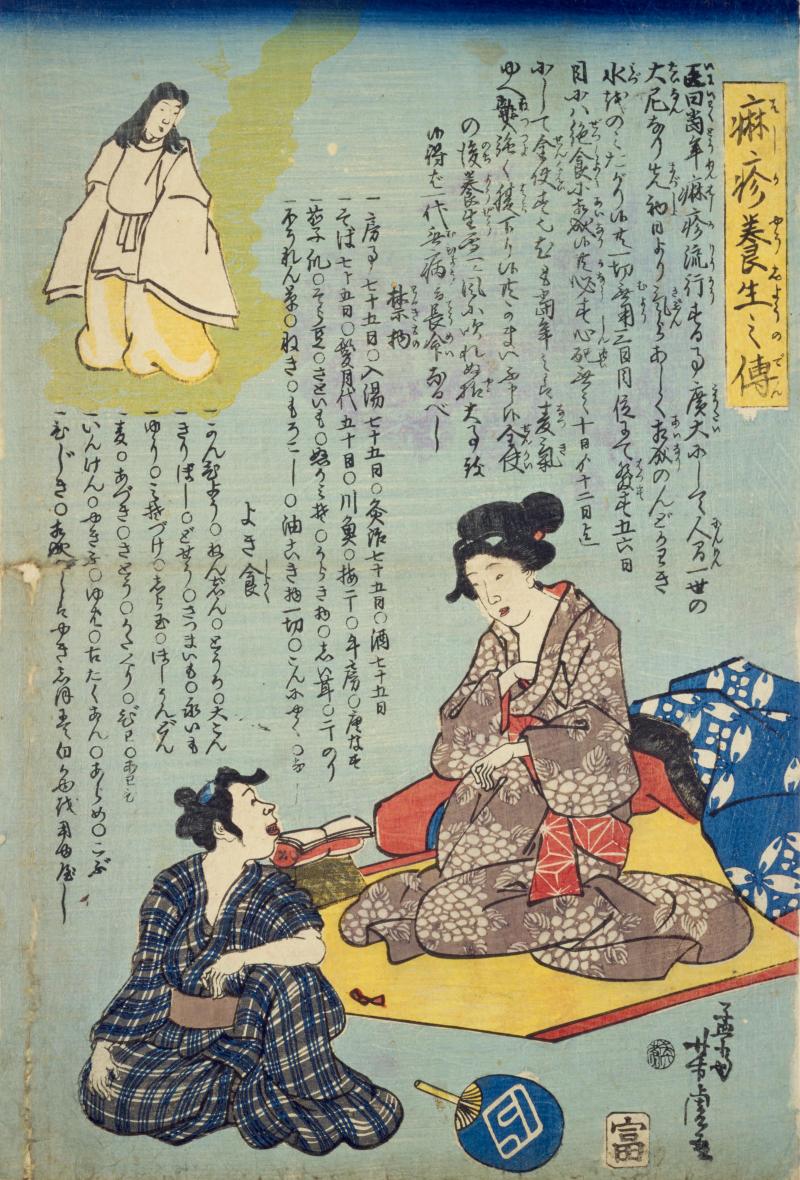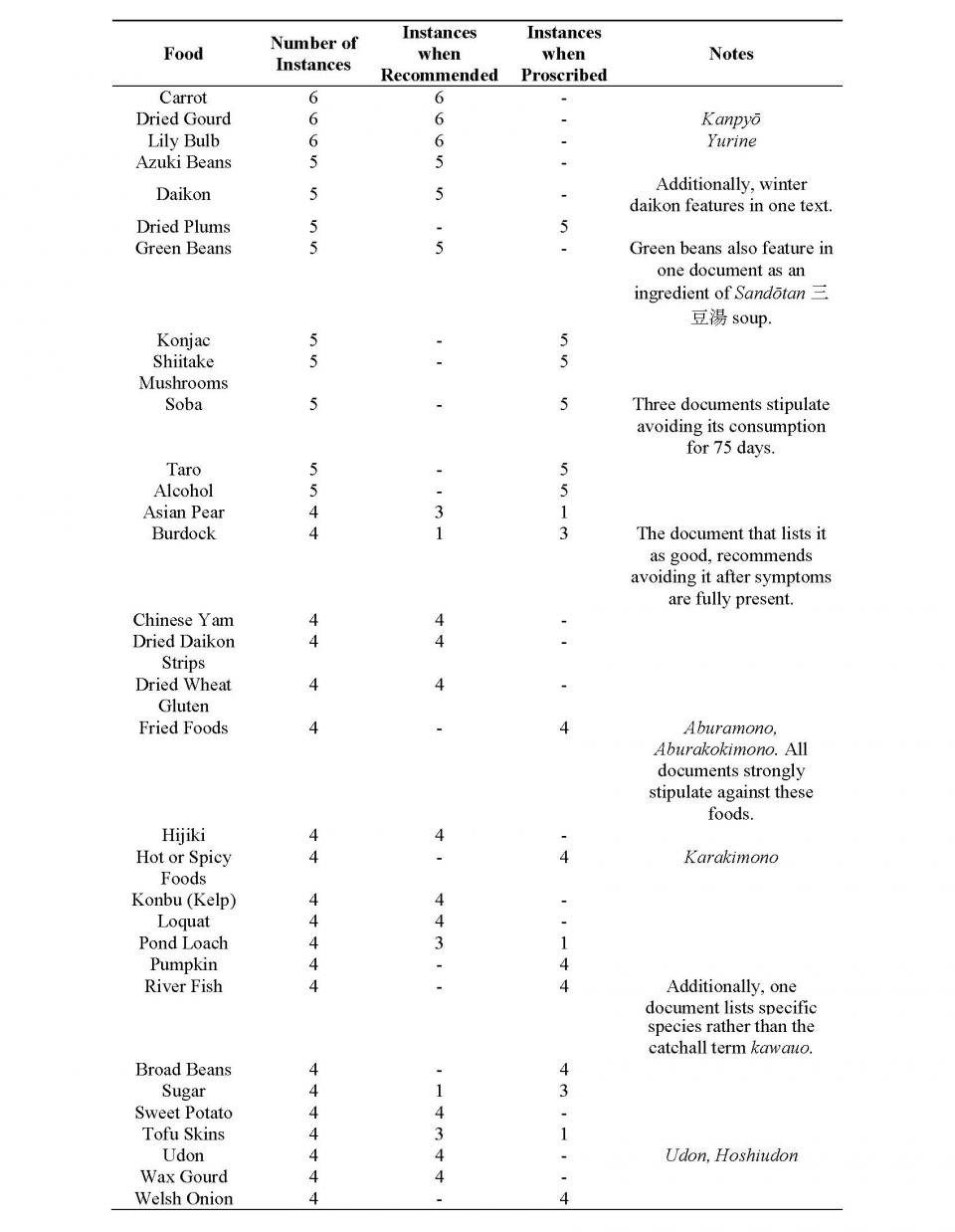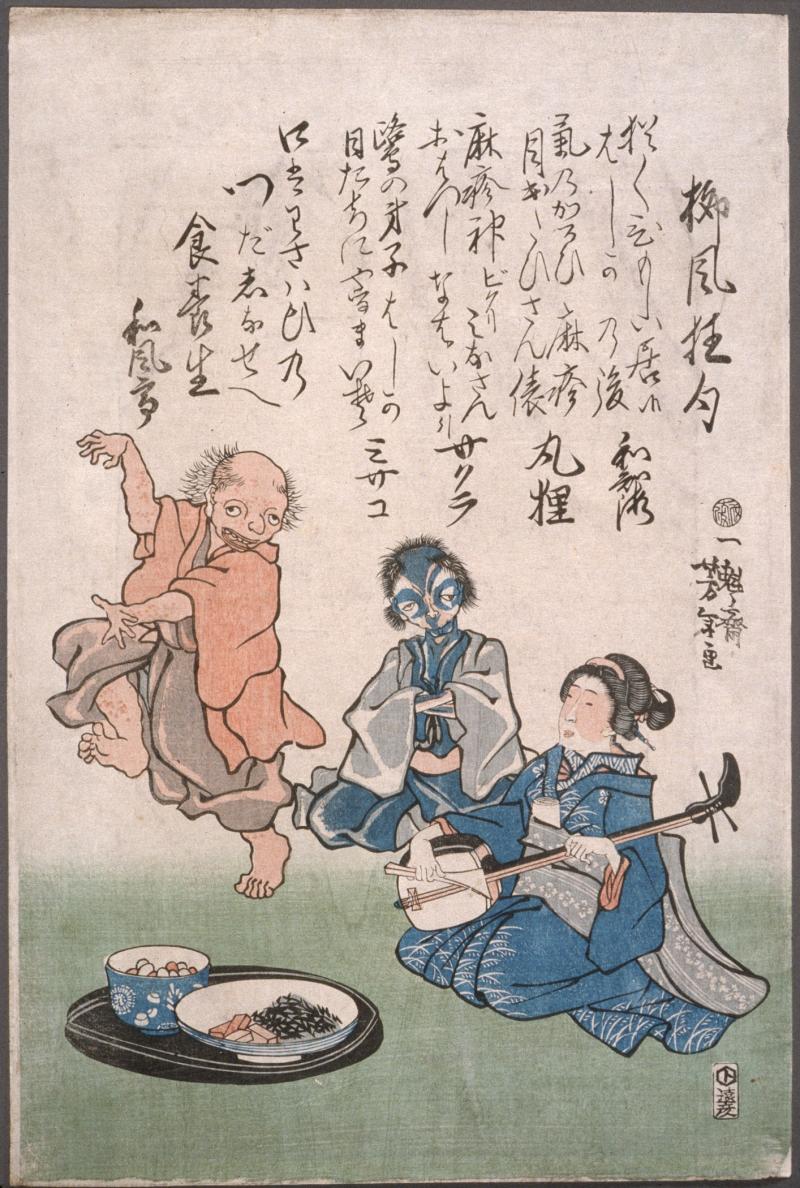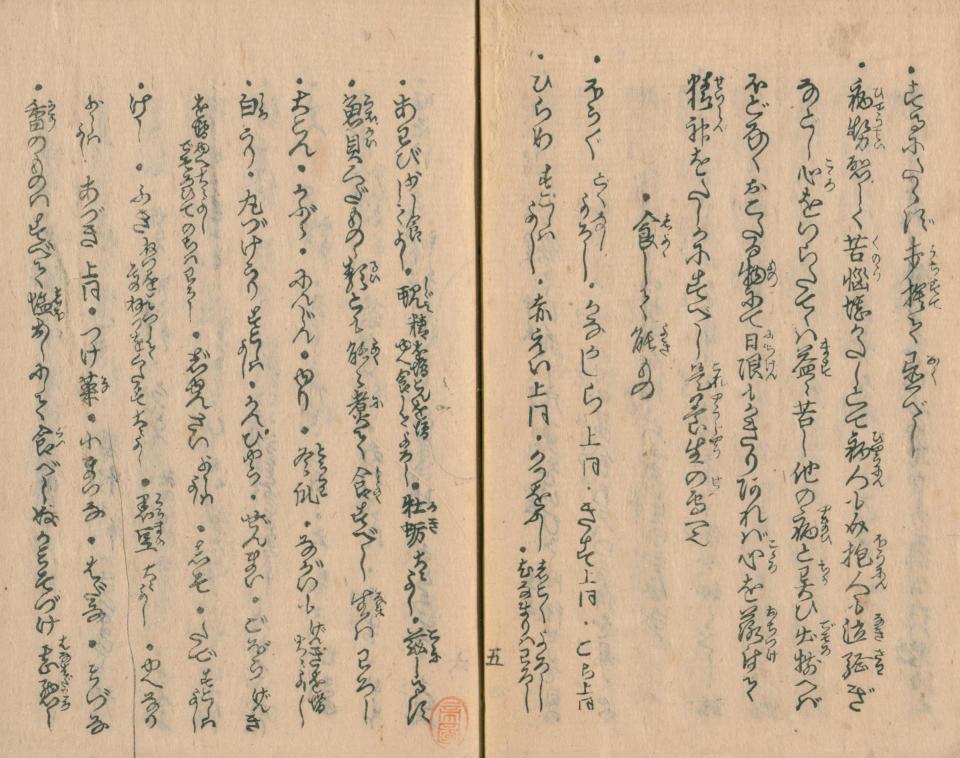Throughout the Edo period (1603–1867), measles outbreaks periodically shook Japan. The disease spread rapidly with high infection and mortality rates, particularly among young people. The Bunkyū 文久 2 (1862) epidemic was the first outbreak of the disease in 26 years (Jannetta 1987, 133). The epidemic, which began in the fourth month of Bunkyū 2 and lasted until the autumn, is famed for its severity, with figures suggesting that in some areas up to 63% of the population contracted the disease (Jannetta 1987, 132) and that between 76,000 and 240,000 people died in Edo (Tokyo) alone (Sakai 2008, 242). Indeed, according to the Edo shichū hashika byōnin chōsho 江戸市中麻疹病人調書, which was published in the seventh month of Bunkyū 2, and was recently partially transcribed during the University of Cambridge’s Tackling Pandemics in Early Modern Japan project, over 576,420 people in Edo contracted the disease, and over 73,262 of those people died. Despite some damage to the text, the figures suggest that the epidemic had an average case fatality ratio of 12.71% or more at the time of its composition. This ranged from 8.65% to 18.71% depending on the area of the city. These are no small figures, given that most estimates place the city’s population at 1,000,000–2,000,000 people, which would mean that between 28.82% and 57.64% of the city’s inhabitants contracted the disease and between 3.66% and 7.33% died from it. As noted, these figures do not contradict those found in other primary sources.

Hashika yōshō (yōjō) no den is a hashika-e focusing on curing measles. It provides an overview of the symptoms of measles and recommendations about diet and behavior. The image appears to show a woman who has been recovering from the disease.
Hashika yōshō (yōjō) no den is a hashika-e focusing on curing measles. It provides an overview of the symptoms of measles and recommendations about diet and behavior. The image appears to show a woman who has been recovering from the disease.
Courtesy of the National Diet Library Digital Collections. Click here to view source.
 This work is licensed under a Creative Commons Public Domain Mark 1.0 License.
This work is licensed under a Creative Commons Public Domain Mark 1.0 License.
Influenced by the literary traditions of yōjōsho 養生書 (books about health) and woodblock printing on the themes of disease and disaster, the topics of food and diet feature prominently in texts and artworks concerning the 1862 epidemic. From these texts, we can discern information about changes to dietary and lifestyle practices during the epidemic and, by extension, pre-epidemic practices. In this article, I use data collected from six documents that were transcribed during the aforementioned project; these are a small book titled Hashika yōjō kagami 麻疹養生鑑 and a hashika-e 麻疹絵 (a print about measles created to spread information about measles prevention and treatment) entitled Hashika yōshō (yōjō) no den 麻疹養生之伝, both kept in the National Diet Library, Japan, and four hashika-e from the Victoria and Albert Museum entitled Hashika kokoroe no zue 痲疹心得之図画, Hashika o karoku suru den 麻疹を軽くする伝, Hashika taiji 痲疹退治, and Hashika teate no koto 麻疹手当之叓. These texts were chosen for the project because they exist in IIIF (International Image Interoperability Framework) format, had not previously been transcribed, and because of the project’s partnership with the Victoria and Albert Museum. All of these documents were published in Edo, and each contains lists of foods and practices that are either beneficial or detrimental for the prevention and/or treatment of measles. Hashika yōjō kagami, for example, lists 171 foods or food types. These are often appended with instructions on the preparation and/or recommended quantities for consumption or commentary on potential dangers and effects. The five hashika-e, on the other hand, contain much shorter lists that include between 28 and 49 types of food and generally lack supplementary notes.
Although historians have asserted that Edo period (1603–1868) diets were unvaried, with the average person’s daily meals consisting mostly of rice (which would account for 80% to 90% of a person’s energy intake), soup, pickles, and side dishes of fish or vegetables (Ehara, Ishikawa and Higashiyotsuyanagi 2009: 184–185), documents on measles suggest that Japanese diets were supplemented with a range of different foodstuffs. There are 67 foods that appear in more than one of the documents, and 32 of these feature in the majority (four or more) of the documents. Of these 32 commonly listed foods, 18 feature as recommended foods and 14 feature as foods to avoid. These are listed in the following table:

2022 James Morris
 This work is licensed under a Creative Commons Attribution 4.0 International License.
This work is licensed under a Creative Commons Attribution 4.0 International License.

The eponymously named Ryūfū kyōku is a hashika-e featuring a series of comical poems known as ryūfū kyōku (a predecessor to modern senryū) about measles. This piece is somewhat of an outlier amongst hashika-e, which tend to focus primarily on diet and conduct, health, or the supernatural. Be that as it may, the final poem includes the theme of diet and the accompanying picture which features a geisha entertaining anthropomorphic representations of measles includes an image of a meal.
The eponymously named Ryūfū kyōku is a hashika-e featuring a series of comical poems known as ryūfū kyōku (a predecessor to modern senryū) about measles. This piece is somewhat of an outlier amongst hashika-e, which tend to focus primarily on diet and conduct, health, or the supernatural. Be that as it may, the final poem includes the theme of diet and the accompanying picture which features a geisha entertaining anthropomorphic representations of measles includes an image of a meal.
Accessed via Wikimedia on 15 March 2022. Click here to view source.
 This work is licensed under a Creative Commons Public Domain Mark 1.0 License.
This work is licensed under a Creative Commons Public Domain Mark 1.0 License.
According to Hata Yuki, the foods that are commonly listed on hashika-e are those which were made from crops that were widely produced during the late Edo and early Meiji (1868–1912) periods and, therefore, likely represent commonly consumed items at the time (Hata 2011, 105). Furthermore, hashika-e were created for a mass audience and, therefore, we might expect the foods listed on them to reflect the foods commonly consumed by their readership. The documents, in encouraging people to consume and refrain from consuming certain sorts of common foodstuffs based on Chinese pharmacognostic (herbalist) thought (Hata 2011, 106–113) in order to prevent and treat measles, likely influenced the diets of ordinary people during the epidemic. Ordinary people increased their intake of some commonly eaten foods while decreasing their intake of others. For instance, although there were many eating and drinking establishments including soba shops in Edo during the period, the recommendations against the consumption of alcohol and soba made during the epidemic appear to have had a negative influence on the profitability of these establishments. Indeed, some hashika-e record the plights of these and other businesses during the epidemic (Sakai 2008, 247), suggesting that there were real changes to people’s eating habits.

Hashika yōjō kagami is a small book by Sumida Sōsai on curing measles. The book, which spans 18 pages, includes a section on the symptoms of measles, but primarily focuses on the steps that people should take to avoid, cure, and recover from the disease. Approximately half of the text is a list of foods that should be eaten or avoided. This image shows the beginning of the list of foods that the author claims are good to eat, focusing here on fish and vegetables.
Hashika yōjō kagami is a small book by Sumida Sōsai on curing measles. The book, which spans 18 pages, includes a section on the symptoms of measles, but primarily focuses on the steps that people should take to avoid, cure, and recover from the disease. Approximately half of the text is a list of foods that should be eaten or avoided. This image shows the beginning of the list of foods that the author claims are good to eat, focusing here on fish and vegetables.
Courtesy of the National Diet Library Digital Collections. Click here to view source.
 This work is licensed under a Creative Commons Public Domain Mark 1.0 License.
This work is licensed under a Creative Commons Public Domain Mark 1.0 License.
Documents about the 1862 measles epidemic in Japan, therefore, provide a looking glass through which we can understand the changes in people’s diets during the epidemic and common eating habits prior to the epidemic. Since there are very few texts pertaining to the diets of ordinary people during the Edo period, contemporaneous texts pertaining to food and health are highly important for reconstructed information about the lives of those from non-privileged social classes.
How to cite
Morris, James. “Good Foods and Bad Foods: The 1862 Measles Epidemic and Diet in Edo.” Environment & Society Portal, Arcadia (Spring 2022), no. 4. Rachel Carson Center for Environment and Society. doi:10.5282/rcc/9396.
ISSN 2199-3408
Environment & Society Portal, Arcadia
 This work is licensed under a Creative Commons Attribution 4.0 International License.
This work is licensed under a Creative Commons Attribution 4.0 International License.
2022 James Morris
This refers only to the text and does not include any image rights.
Please click on the images to view their individual rights status.
- Ehara, Ayako 江原絢子, Ishikawa Naoko 石川尚子, and Higashiyotsuyanagi Shōko 東四柳祥子. Nihon shokumotsushi 日本食物史. Tokyo: Yoshikawa Kōbunkan, 2009.
- Hata Yuki 畑有紀. “Bakumatsu no mashin to shoku – Shokumotsu Honzōbon o chūshin ni” 幕末の麻疹と食ー食物本草本を中心に. Issues in Language and Culture 12 (2011): 101–118.
- Jannetta, Ann Bowman. Epidemics and Mortality in Early Modern Japan. Princeton: Princeton University Press, 1987.
- Sakai Shizu 酒井シヅ, ed. Nihon shippeishi 日本疾病史. Tokyo: Hōsō Daigaku Kyōiku Shinkōkai, 1993.
- Sakai Shizu 酒井シヅ. Yamai ga kataru Nihonshi 病が語る日本史. Tokyo: Kōdansha, 2008.
- Smits, Gregory. “Warding off Calamity in Japan: A Comparison of the 1855 Catfish Prints and the 1862 Measles Prints.” East Asian Science, Technology, and Medicine 30 (2009): 9–31.
- Watanabe Minori 渡辺実. Nihon shokuseikatsushi 日本食生活史. Tokyo: Yoshikawa Kōbunkan, 2007.








